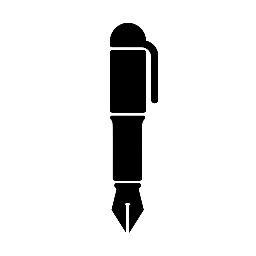BUS 210 Module Three Assignment Guidelines and Rubric
Overview
Leadership maps are a valuable tool for reflection for emerging leaders. They help leaders develop self-awareness and a growth mindset while revealing areas of opportunity for improvement. In this assignment, you will review the results of the self-assessments you’ve completed throughout the course as well as reflect on your perceptions and biases. Then you will create a leadership map using a presentation tool of your choice. Your leadership map will also help you complete Project Two, which is due in Module Eight.
Directions
Use a visual presentation tool of your choice to create a map of the traits, skills, strengths, and weaknesses you have identified about yourself as a leader. You are encouraged to use the results from course resource assessments, such as the Big Five assessment, to guide your reflections.
Use the example below to see what a leadership map might look like.

A text-only version is available: Leadership Map Example Text-Only Version Word Document.
Specifically, you must address the following rubric criteria:
- Personality Traits: List your key leadership personality traits based on self-reflections and relevant assessment results from course resources.
- Communication Skills: Identify strengths and weaknesses in your communication skills.
- Leadership Style: Identify the leadership styles or approaches you relate to most closely.
- Career Goals and Development: Identify your professional goals and opportunities for career and leadership development.
What to Submit
Submit your visual map as a PDF file. You may use the tool of your choice to design your leadership map. Consider using one of the following possible tools:
- Microsoft Word
- Prezi
- Canva
- Visio
Module Three Assignment Rubric
CriteriaMeets Expectations (100%)Partially Meets Expectations (75%)Does Not Meet Expectations (0%)ValuePersonality TraitsLists key leadership personality traits based on self-reflections and relevant assessment results from course resourcesShows progress toward meeting expectations, but with errors or omissions; areas for improvement may include identifying more than one personality traits from the assessmentDoes not attempt criterion25Communication SkillsIdentifies strengths and weaknesses in one’s communication skillsShows progress toward meeting expectations, but with errors or omissions; areas for improvement may include identifying both strengths and weaknesses in one’s communication skillsDoes not attempt criterion25Leadership StyleIdentifies leadership styles or approaches that one relates to most closelyShows progress toward meeting expectations, but with errors or omissions; areas for improvement may include listing more than one leadership style or approach to identify withDoes not attempt criterion25Career Goals and DevelopmentIdentifies professional goals and opportunities for career and leadership developmentShows progress toward meeting expectations, but with errors or omissions; areas for improvement may include identifying both career goals and development opportunitiesDoes not attempt criterion25Total:100%
Self-Assessment
· Openness:
· Conscientiousness:
· Extraversion:
· Agreeableness:
· Neuroticism:
· Openness: curious, original, intellectual, creative
You scored moderately high on openness (32 out of 50).You’re probably fairly creative and imaginative, but you also recognize the importance of routines and structure. You experience a good balance of abstract and realistic thoughts. When faced with a problem, you can think outside the box for new ideas but will also consider tried-and-true methods.
· Conscientiousness: organized, achievement-oriented, dependable
You scored moderately high on conscientiousness (36 out of 50).You are likely described as responsible and reliable. You value routines and structure because you recognize that they help keep things on track. However, you’re also willing to cut others some slack; although you have high standards, you don’t expect absolute perfection at all times. You give yourself time to relax and have fun—occasionally.
· Extraversion: outgoing, talkative, sociable
You scored moderately high on extraversion (39 out of 50).You’re probably often described as outgoing and social, but you also find yourself needing time alone. You maintain a healthy balance between the two extremes of this personality trait. You likely feel energized in groups or when giving presentations, but you may not feel the need to be the center of attention at all times. You can be assertive when you need to, but you’re also quite capable of listening or holding back when appropriate.
· Agreeableness: affable, tolerant, sensitive, trusting, kind
You scored moderately high on agreeableness (38 out of 50).You’re probably described as kind and helpful. You prefer to avoid conflict and will often dodge situations or conversations that may upset other people. However, if confronted directly, you can speak up or stand your ground, though you may try to smooth things over afterward.
· Neuroticism: anxious, irritable, temperamental, moody
You scored low on neuroticism (20 out of 50).You’re more likely to focus on the positive things in life and take issues in stride. You not only help encourage others but can also help stabilize a group. You’re able to think calmly in stressful situations and you can probably think through a problem rationally or logically before reacting.
Remember, you can refer to the previous page for more detailed information on each of the traits.
Keep in mind that high and low scores do not reflect fixed strengths and weaknesses of your personality. Instead, they merely indicate individual preferences and tendencies that align with your personality. Knowing these preferences can help you decide what to focus on to develop effective leadership skills.
,
image1.png
Would you like to discuss this project or get it done?
Reach out on WHATSapp at +1 (240) 389-5520
Or
Place an order on our website for quick help
Guarantees
A+ Paper
Timely Delivery
Zero Plagiarism
Zero AI


Leave a Reply